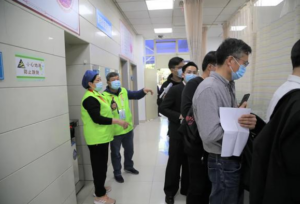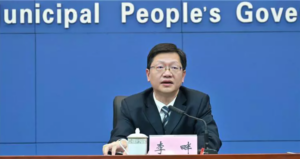
Return to the peak is approaching, the rural epidemic prevention and control of the difficulties in which?
Currently, the new coronavirus epidemic is developing rapidly in China. With the increased movement of people at the end of the year and the beginning of the month, the prevention and control of the epidemic in rural areas where medical resources are scarce is facing a huge challenge. on December 31, 2022, the State Council Joint Prevention and Control Mechanism issued the “Work Plan for Strengthening the Prevention and Control of the Current Epidemic of New Coronavirus Infection in Rural Areas” (the “Plan”) to further deploy the prevention and control of the epidemic in rural areas.
The Program states that “we should fully understand the importance and urgency of doing a good job in the prevention and control of the current epidemic in rural areas”. Around the “health protection, prevention of serious illnesses”, take appropriate measures, focusing on the operation of the epidemic prevention system in rural areas, the supply of drugs, treatment of serious illnesses, protection of the elderly and children and other aspects of work, strengthen the daily health services, highlight the management of key populations, orderly diversion of treatment needs, provide graded classification of medical and health services, to maximize the protection of rural residents life safety and physical health, and minimize the impact of the epidemic on rural economic and social development.
“Through the urban infection peak, hospitals are now operating at high capacity. The peak of infection in counties and rural areas has not yet arrived, but these places may soon also face the need to use a large number of beds. With urban medical resources not yet released and rural medical resources weak, it is a very important topic how to reasonably and effectively allocate medical resources so that seriously ill patients in rural areas can have beds and receive timely treatment.” Professor Wang Peigang, director of Wuhan University’s Population and Health Research Center, told Interface News.
Earlier, Wuhan University China Rural Governance Research Center researcher Lu Dewen pointed out in an interview with China Newsweek that there is an unpredictable aspect of rural epidemic prevention now, in that the rural population is more aged and vulnerable, and the rate of serious illness may be higher, so there may be an impact on medical resources.
Chen Saijuan, academician of the Chinese Academy of Engineering and professor at Shanghai Jiao Tong University School of Medicine, said in a recent interview with China Science News that because of the relative lack of medical resources in rural and small and medium-sized town areas, and the large number of elderly people and people with underlying diseases, there is an urgent need to start contingency plans for the spread of the Omicron epidemic to rural areas, allocate more medical resources to rural grassroots, and do a good job of emergency response for effective drugs and new vaccines It is urgent to start a contingency plan for the spread of Omicron epidemic in rural areas, allocate more medical resources to the rural grassroots, and do a good job in the emergency use of effective drugs and new vaccines.
Jiang Qingwu, an epidemiologist and professor at the School of Public Health of Fudan University, also said recently that rural epidemic prevention, in fact, is similar to urban areas. For the treatment of mild and asymptomatic infections, which account for the majority of cases, medical institutions should be well prepared with drugs and provide appropriate training for rural doctors to avoid medication misconceptions; if there is an aggravation of the disease, there should be some emergency channels to be able to refer to hospitals in the city.
However, Wang Peigang pointed out that the equitable distribution of medical resources is the focus and difficulty of rural epidemic prevention. People living in rural areas have far less access to quality medical resources than urban residents, and on the other hand, rural residents have more limited access to health knowledge and ability, so when an epidemic comes, they may rely on “hard resistance” instead of taking the initiative to take some scientific health measures.
According to the data of the 7th census, the population living in the countryside is 509.79 million, accounting for 36.11%. However, according to the data of China Statistical Yearbook 2021, in 2020, there were 796,000 rural doctors and health workers in China, accounting for only 5.9% of the country’s total health personnel. In terms of the average daily burden of physician visits alone, in 2020, it is 5.86 for general hospitals and 8.47 for rural health centers. of China’s health technicians per 1,000 population, the figures for urban health technicians, licensed (assistant) physicians and registered nurses are 11.46, 4.25 and 5.40 respectively; while the corresponding figures for rural areas are only 5.18, 2.06 and 2.10.
Wang Peigang said that one of the current priorities is to play the leading role of county hospitals, fully mobilize medical resources at county and township levels, and increase the number and proportion of critical care beds to meet the needs of rural residents. In addition, it is necessary to comprehensively coordinate and centrally deploy medical resources to support rural areas, so that rural residents can receive timely treatment when the peak of rural infections arrives. As for the party committee and the government, they should clarify the list of responsibilities and put into practice the concept of “preventing serious illness and ensuring health”, especially for the elderly and children in rural areas, which requires doctors and grassroots cadres in township health centers to “divide and conquer” to avoid a The management vacuum should be avoided.
For the support of rural medical and health institutions, “the program” requires the provincial urban and rural hospitals to help each other based on the relationship, the selection of the province’s urban comprehensive strength of secondary and above comprehensive hospitals, in accordance with the principle of zoning, and the counties (cities, districts, banners) to establish a counterpart support mechanism, relying on the county medical community to do a good job of graded diagnosis and treatment interface, improve the primary care, reception, referral process.
At the same time, coordinate the deployment of medical personnel in the county, combined with the township health center service population and service volume, increase the township health center medical staffing efforts. County hospitals, township health centers to establish medical and health personnel echelon, in the township health centers, village health room medical staff shortage, echelon personnel immediately through the station, traveling medical and other ways to fill.
Wang Peigang introduced, “the program” mentioned the establishment of key populations information base, strengthen the health services of key populations, etc., are important elements of the equalization of basic public health services, is now at the beginning of 2023, it is recommended that the funding of basic public health services this year to appropriately increase government subsidies to stimulate the flow of medical resources, talent to rural areas, to promote the implementation of the family doctor system. Through the government’s guarantee mechanism, the motivation and initiative of health care workers will be improved to ensure the operation of the epidemic prevention system in rural areas and minimize the impact of epidemics on high-risk and vulnerable populations in rural areas.
However, Wang Peigang also admitted that township health centers and rural health offices do face a lack of medical and nursing staff. To deal with this situation, December 15, the National Health Commission, the Department of Primary Health Care Director Nie Chunlei introduced at a press conference, manpower training in a short period of time is difficult, in the short term can be through the second and third level hospitals down to send people to support the grassroots in some practices, but also to recruit staff who have retired in the last five years, to fill the grassroots medical and health institutions. There are also some are in other positions of medical and health personnel, can be recruited to fill the grassroots institutions to relieve the pressure. At the same time, the role of family doctors should be effectively played to promote the contracting of services for key populations, and strive for full coverage to ensure that the family doctor can be contacted when the need arises.


Average Rating